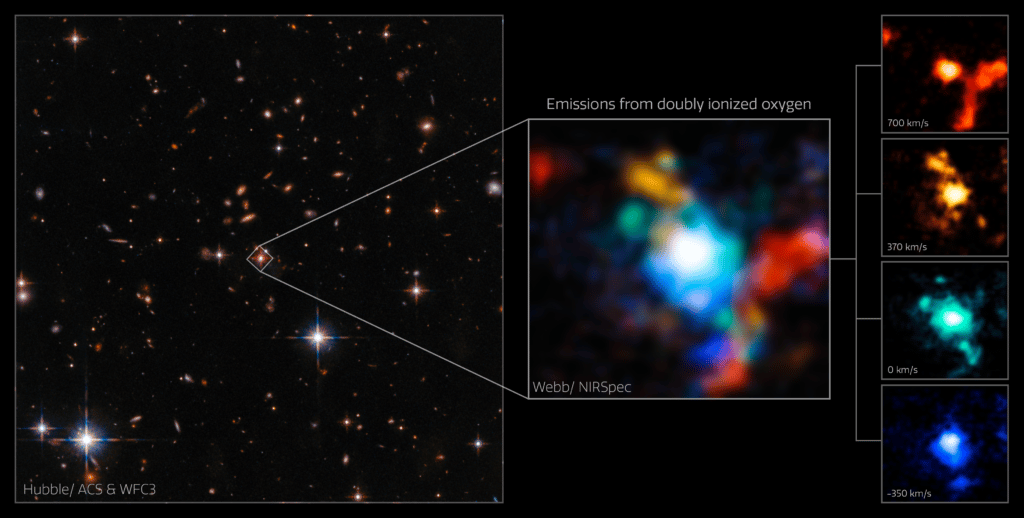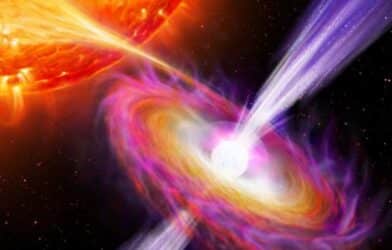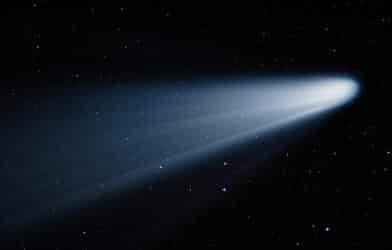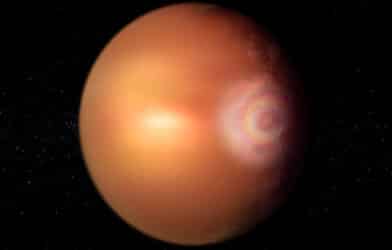Star Wars and many other sci-fi films and fiction offered us a miasma of fantastical ideas as to how the fate of humanity might go. We were given a new glimpse at how we could be in the future (past).
I had the unique experience of seeing Star Wars: The Phantom Menace, the first installment of the prequels for Star Wars, at a drive-in movie theater. I was lying on the padded bed of my dad’s truck on a warm summer night in 1999 with my family.
Star Wars was so influential that even Ronald Reagan named an interesting space-defense program after it: The Star Wars program.
Aside from Battletech, Star Wars, Star Trek, Sailor Moon, and more space-related dramas and fantasies, we have our own space opera in real-time.
Scientists are looking through time with the James Webb Space Telescope (JWST) and found galaxies crashing into each other around a rare red quasar in a black hole.
“We think something dramatic is about to happen in these systems,” says Andrey Vayner, a Johns Hopkins postdoctoral fellow who studies the evolution of galaxies, in a statement. “The galaxy is at this perfect moment in its lifetime, about to transform and look entirely different in a few billion years.”
The Johns Hopkins team in Baltimore had hastily constructed itself to assemble and detail the data they’d retrieved from the JWST. It was an astonishing find for the team. Vayner and graduate student Yuzo Ishikawa kept mashing their F5 keys to refresh their data, so to speak.
They revealed in the summer of that year that they had struck something important.
Behind the scenes, there’s a heavy riptide of interest amongst government agencies and privateers aiming to use the James Webb Space Telescope for their agendas. The fact that these individuals and their teams were able to secure a spot so soon after the launch of the JWST must mean something of importance.
The Hubble Telescope honed its eye on this rare quasar-blackhole-merging-galaxy combination before, but JWST can see what we once wondered about in clearer detail
“With previous images we thought we saw hints that the galaxy was possibly interacting with other galaxies on the path to merger because their shapes get distorted in the process and we thought we maybe saw that,” says co-principal investigator Nadia L. Zakamska, a Johns Hopkins astrophysicist, “But after we got the Webb data, I was like, ‘I have no idea what we’re even looking at here, what is all this stuff!’ We spent several weeks just staring and staring at these images.”
These images befuddled scientists like Nadia L. Zamanska. But she offers that these kinds of merging and crashing galaxies might’ve been common millions of years ago.
Light takes literal light-years to travel to us. That means that light is the fastest thing to travel in human understanding. It took that long to reach us from that position in the sky for our understanding. What we’re seeing in the sky may have already died, transitioned to different states, or have done something different altogether completely.
The eye-scorching quasar is fueled by what Zakamska calls a “monster” of a black hole at the center of the attraction of the galaxies. According to her, it’s “extremely red.” The quasar is measured to be about 11.5 billion years old.
And it appears to her to be the most powerful quasar she’s seen from such a distance.
“What you see here is only a small subset of what’s in the data set,” says Zakamska. “There’s just too much going on here so we first highlighted what really is the biggest surprise. Every blob here is a baby galaxy merging into this mommy galaxy and the colors are different velocities and the whole thing is moving in an extremely complicated way. We can now start to untangle the motions.”
However, we must first assess our galaxies and the universe around us to make advancements in hyperdrive technology, myomer bundle tech, and phaser gun know-how. Scientists like Zakamska and more are scratching away at the surface of why our universe works the way it does. Turn on your targeting computers, we’re targeting knowledge.
The research is published in the Astrophysical Journal Letters.










-392x250.png)

